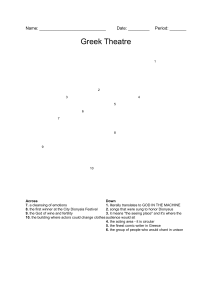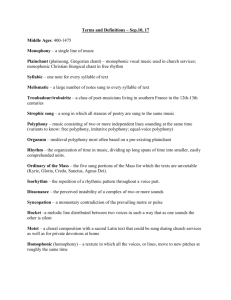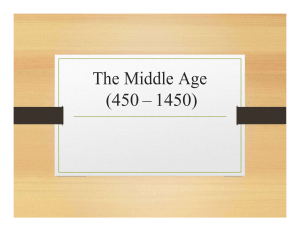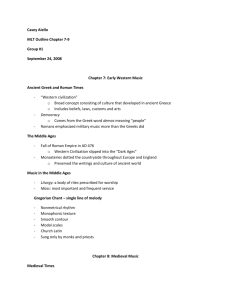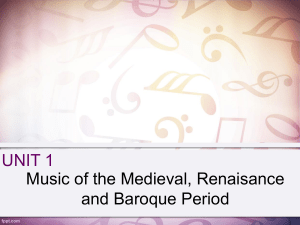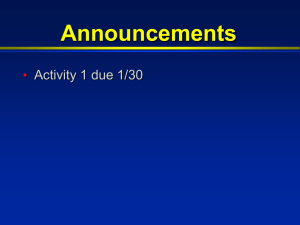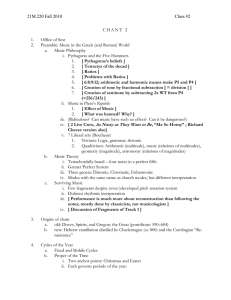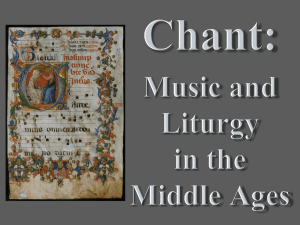Medieval Music
advertisement
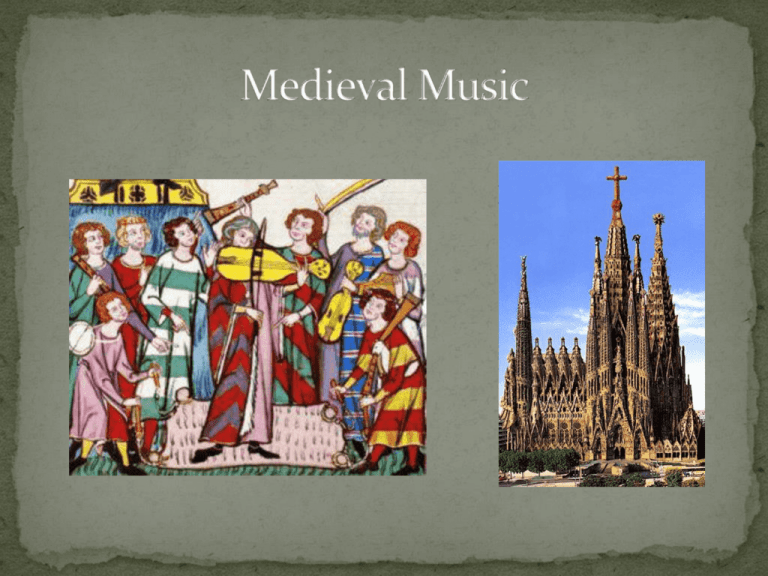
http://wn.com/zaneeducate?upload_ti me=all_time&orderby=rating Earliest proof of instruments: Cave drawings Biblical stories Hieroglyphs The word music derives from the ancient Greek muses, the nine goddesses of art and science. 500 B.C.: Pythagoras experimented with acoustics and the mathematical relationships of tones. Greek modes: scales comprised of whole tones and half steps. The Roman empire has just fallen! Many powerful individuals filled this void throughout Europe. Ex. William the Conqueror, Joan of Arc, etc. The Hundred Years War was fought between England and France and spanned 116 years. It was a brutal time in history. The one unifying influence throughout Europe was the catholic church. Oratores: "those who pray” Priests, monks, etc. Lived modest lives in service to God Bellatores: "those who fight" Knights, nobility, castles, etc. Wealthy, privileged lives. Laborares: "those who work" Everyone else! The bulk of European society. Lived in villages, were peasants, etc. Feudalism was in full force in the Middle Ages. There were 2 types of music during this time. Sacred (music for the Church) and Secular (music for entertainment.) Monophonic texture: chant (only sung by men). Later developed Parallel Organum. Modes used as basis of Pitch No purely instrumental music Musical notation developed. http://www.youtube.com/watch?v=2HEKhr002Ts Questions: PITCH: How do the text and pitch work together in Gregorian chant? RHYTHM: How would you describe the meter of this piece? Sung by travelling entertainers called Troubadours Monophonic but sometimes accompanied by an instrument like a lute. Later on became polyphonic. Regular meter, tempo was usually faster. Form: ballad (song that tells a story)
